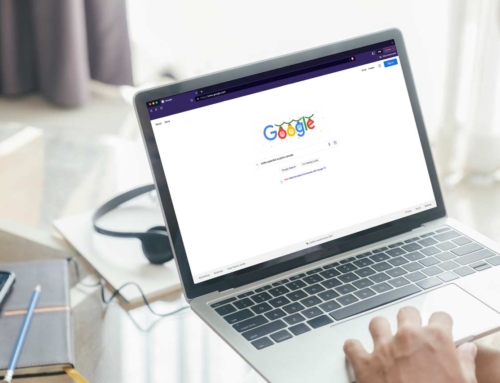Website speed optimization is one of the most important steps to improve your SEO dramatically and fast. We talked about “Google’s ranking factors and why they exist” many times but as a quick reminder, Google’s ranking factors are created based on visitors’ behaviors. If you think of them as a rule, you will never be successful. You have to understand Google is your friend and gives you the advice to be successful. Website speed optimization is one of the most important parts of your SEO optimization. Let’s go deeper into website speed optimizations.
Why the website loading speed is slow?
Hosting Provider:
There are many different hosting providers. Good ones and bad ones. Your hosting provider may change your website speed by up to 20%.
UnOptimized/UnScaled Images:
Image Optimization is one of the most important parts of website speed optimization. Every image on our website will be downloaded to the visitor’s computer to be seen by them. Every bit counts so they need to be well-scaled, optimized, and still of high quality.
Wrong Usage of HTML, CSS, and JS:
Not everyone is a great coder or every theme / Content Management System work the same. Sometimes, we have unnecessary codes, we use CSS or JS codes externally when we should use inline or we write more than we should. This will end up as a bad website speed optimization practice on the backend.
Too many page requests / HTTP requests:
Every time visitors try to reach our website, their browser sends requests to the server to receive important files to display the website correctly. These files may contain, text, images, video, etc. Request time changes based on the content requested. HTTP requests are very important for website speed optimization. External JS and CSS files also increase page requests. Lowering the HTTP requests will help your website speed optimization.
UnDone Browser Caching:
Word caching stands for “storing in the web” in the development world. Browser caching is simply giving the order to the browser visiting your website and requesting files from your server. What do we command to the visitor’s browser? We tell the browser to hold the files for a designated time. This will reduce HTTP requests and increase the website speed after the first visit because all the files are already downloaded to the visitors’ computers and kept in there for the next time.
Having too many URL redirects:
Too many redirections are simple logical mistakes. Redirections can cause your server to keep sending requests to find the correct page that needs to be loaded. This back-and-forth progress keeps your server busy when it is needed to load the page. It also may cause 301 and sometimes 404 errors. It can also cause the visitor’s browser to get stuck in a loop.
What happens if website speed optimization has not done correctly?
There are 2 main factors why we need our website loading speed faster.
First, if a website is loading slower than it should be, search engines will rank that website lower in the search results. Ranking lower in the search results means fewer visitors. Our main purpose in having a website is to bring as many visitors as we can. In this case, we need to work on our website speed optimization very carefully.
Second, visitors are looking for faster-loading websites. No one likes to wait. Websites that load in more than 3-4 seconds are losing 40% of their visitors. Do you know what that means? -Yes, instead of generating leads or sales, you are increasing your bounce rate. The bounce rate is the percentage of visitors who do not stay on your page for a long time. If you have a high bounce rate, you will also rank lower in the search results.
There are many tools to check your website speed. They all come up with different scores. We personally use GtMetrix to check the speed of the websites for desktop and Google PageSpeed Insight for the mobile version of the website. These tools are free of use and will also show you the problems that cause a slowdown.
Things to do for better website speed optimization:
Better hosting provider
- Get a better hosting provider. It is a must for website speed optimization. There are some basic rules when you are picking up a hosting company.
- Check their ratings and read what people think about the platform that you will use. Like many people say; “do not use GoDaddy for a WordPress website”
- Look for offered bandwidth and storage capacity.
- Their PHP version is very important. Make sure they are using the latest version for servers.
- Server speed is very important. Again, it is better to read reviews of the hosting provider about the platform you are planning to use.
- They have high uptime. If they are down very often, you will get penalized by the search engines.
- Get a better hosting provider. It is a must for website speed optimization. There are some basic rules when you are picking up a hosting company.
Web optimized images
- Images on your website can greatly affect the loading time of your page. On most sites, images are close to 60% of the total size of the website. It is possible to optimize the images you upload to your site with tools such as Photoshop. The format of the images you use should be JPG or PNG. We recommend that you avoid BMP, TIFF, or similar formats. You can also read our full article about image optimization.
Scaled images
- The images used in the web pages need to be perfectly scaled. If you have to place your image in a 200px * 200px box, your image needs to be 200px * 200px. If you have to use larger images consider using thumbnails on the page and linking those thumbnails to the full-size image. 99% of the time you are not going to need images larger than 1800px so do not use too large images even if you linked them from a thumbnail.
- You also need to think about mobile devices. Website speed optimization is different for both mobile and desktop when talking about image optimization. Make sure you also have the mobile version of the images or use scalable images.
Remove unnecessary coding
- It’s clear, right? If you don’t need it, don’t keep it. Especially, if you are using WordPress, almost every plugin you deleted leaves extra code behind. You simply need to get rid of them to keep the workload of your server lower.
Minify HTML, CSS, and JS
- Some web programmers still use the old fashion way to work their programs. Does that work? -Actually, it looks like working but it doesn’t really work as is supposed to be. Minifying refers to removing all unnecessary data, and code comments, and using shorter variables and functions to optimize the file for faster loading time. It does not affect the processing of the resource while doing these. On the other hand, backup always helps.
Inline CSS
- Every file means another HTML request to the server. The first request is for the HTML file and the rest of the requests are made by the HTML file. These requests also included CSS and JS files. For better website speed optimization, we have to keep these requests as low as possible. The best way to keep the HTML requests lower is by writing inline codes for small JS and CSS data.
- After having a well-organized HTTP file, LazyLoad may help speed up your website. Especially, if you have many images.
Avoid bad requests
- Bad requests are usually referred to as missing files. If you have a link on your website that directs to a missing document that happens. It slows down the whole system because it creates a longer conversation between visitors’ browsers and our server. Visitors’ browsers request a document and our server answers “can’t find it”. Then the browser repeats the same request again… Make sure all your links in the codes or on the pages link correctly. Including style and script files.
Enable Gzip Compression
- We have all heard about zipping or compressing a file. Now, think this is happening between the server and the browser. The server compresses the file and answers the requests with a compressed file. The browser on the other side uncompresses the file and displays it.
- That happens seamlessly.
- Reduces bandwidth usage.
Minify redirects
- The best way to reduce redirects is to create your wireframe and logic before you start designing your website.
- Forwarding a domain also might be a better idea than changing your domain. You can still use a new domain without changing anything on your existing website and forward your new domain to your existing domain. You won’t be the only person or company using multiple domains.
Fix the leverage browser caching / Expiry headers
- Optimize your .htaccess or .php files to rule visitors’ browsers. Perfectly written rules usually take about 4 pages but we will give you a few lines of samples.

Remove duplicate content and code
- Never use duplicate content. Google is very strict about this rule. Never copy content from other websites. You may end up being blacklisted by search engines.
- On the other hand, some duplicate content on your own website creates unnecessary requests to the server. It also has a negative effect on your ranking.






